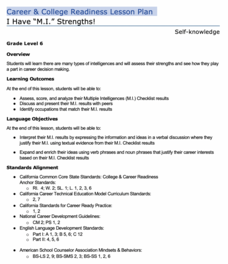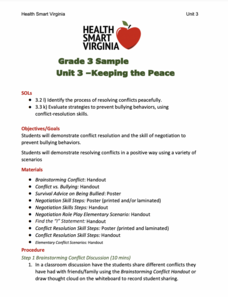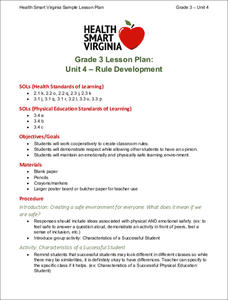Amani Project
Write a CoronaKindness Song
And the beat goes on! Finding a way to connect during the isolation imposed by the Coronavirus pandemic can be challenging. This activity from the Amani Project offers a way to stay close during a time of physical distancing....
Amani Project
Harmony Break! Finding Emotions With Music
Gather the entire family (or class members) for a fun Harmony Break! A volunteer thinks of a color from their Mood Meter that they will express by singing, playing an instrument, or performing a dance. After the performance, the audience...
Amani Project
Harmony Break! Mood Shifting
The fifth activity in the Amani Project series, another Harmony Break, has participants demonstrate a mood shift. They begin by drumming in a way that indicates their current feelings. They then model a change in mood by transitioning...
Amani Project
Harmony Break! Mood Meter Floor Board
The big idea in the fourth lesson from the Amani Project is that people can experience different emotions in precisely the same event. One participant uses their body to express an emotion. Then other participants move to the area of the...
Amani Project
Teach the Mood Meter
The third activity from the Amani Project has youths create a Mood Meter. The colorful meter, divided into red, yellow, blue, and green squares, lets participants indicate not only how they are feeling but also permits them to indicate...
Amani Project
Make an Instrument
Create a little harmony with Amani Project! Young musicians create their instruments using found or recycled objects. As an introduction, class members first experiment with sounds they can make with their bodies (clapping, stomping...
Facing History and Ourselves
Many Voices, One National Identity
To conclude the unit on "Exploring Identity in the United States," pupils consider whether it is possible to combine many voices into one national identity. After creating an identity chart that lists words, phrases, and images that they...
Facing History and Ourselves
Connecting to the Past
Young historians research the connections between their personal histories and the histories of our country to gain a deeper understanding of who they are. To begin, class members write about an object that they consider significant to...
Facing History and Ourselves
Identity and Choices
Timshel! Thou mayest! is the big idea in a activity that reminds learners that they have choices about how they present themselves to others. To begin, individuals rate the degree to which the choices they make each morning are...
Facing History and Ourselves
Identity and Labels
Scholars look at the connections between identity and labels, assumptions, and stereotypes, in a lesson that examines identity in the United States. To set the stage for a discussion of these connections, class members analyze a cartoon,...
Facing History and Ourselves
Identity and Names
Would a rose smell as sweet, as Juliet Capulet asserts, if called by any other name? The importance of names and the connection between names and identity are examined in a activity that explores identity in the United States. After...
California Department of Education
Hitting the Write Note: Writing a Proposal
To whom it may concern ... Scholars undergo the process of writing a letter to an authority figure. The instructional activity asks writers to compose a formal letter requesting a music therapy space. Pupils learn how to submit a project...
California Department of Education
Creating a Therapeutic Soundscape: Ambient Improvisations and Planned Catharsis (CTE)
How is music a form of therapy? Scholars explore the topic using the fourth and final instructional activity from the Changing One's Tune: A Music Therapy STEM series. Learners explore the relationship between music and the mind and...
Franklin D. Roosevelt Presidential Library & Museum
What Does It Mean to be a Good Citizen?
Civics scholars are challenged to determine what it means to be a good citizen. Class members select three adults in their lives and interview them to discover what the term "good citizen" means to each of these people. The class then...
Newseum
The First Amendment in Action Today
Young activists research a community issue and apply the rights defined in the First Amendment to develop a proposal that would solve the issue—using Pinterest's board "The Freedom to Make A Change Posters" as examples, groups design a...
Newseum
Confronting Conformation Bias
Be curious! Seek out different opinions! Be conscious of your thinking process! After reading an article about confirmation bias and motivated reasoning, class members apply these strategies to the topic of school start times. They read...
Teach With Movies
The Great Gatsby
Are you thinking about incorporating a film version of F. Scott Fitzgerald's classic novel in a study of The Great Gatsby? Check out a guide loaded with suggestions for how to supplement a reading of the novel with scenes from three film...
California Department of Education
I Have “M.I.” Strengths!
Scholars complete an interest survey to discover their learning style. Based on their newfound knowledge, learners examine and discuss a list of careers that work best with their learning style.
Health Smart Virginia
Emotions
Five activity ideas begin a six-part series that looks closely at social-emotional competencies. Activities include ways to incorporate kindness, several lessons from Kids Health, a variety of mindfulness practices, scenario discussions,...
Health Smart Virginia
Inside Out Emotions
Following a viewing of Disney/Pixar's Inside Out, scholars list the five emotions depicted in the film—joy, sadness, anger, fear, and disgust. Learners complete a handout and discuss their answers. To close the lesson, peers share a...
Health Smart Virginia
Keeping the Peace
A lesson examines ways young learners can keep the peace with conflict resolution. Scholars share a conflict then discuss the difference between conflicts and bullying. Pupils read scenarios and practice their negation skills.
Health Smart Virginia
Communication
In preparation for a game in which they guess the type of communication used in a scenario, scholars examine and discuss the four types of communication: passive, aggressive, assertive, and passive-aggressive. Learners identify "I"...
Health Smart Virginia
Rule Development
A class discussion defines what it means to make the classroom a safe environment. To make their classroom safe, small groups work collaboratively to create a list of characteristics that make up successful learners. Groups share their...
Health Smart Virginia
Conflict Resolution
A lesson introduces the Peace Corner—a safe place to communicate feelings and problem solve. To gain practice, scholars role-play scenarios that require conflict resolution. Peers speak, listen, brainstorm solutions, shake hands, then...

























